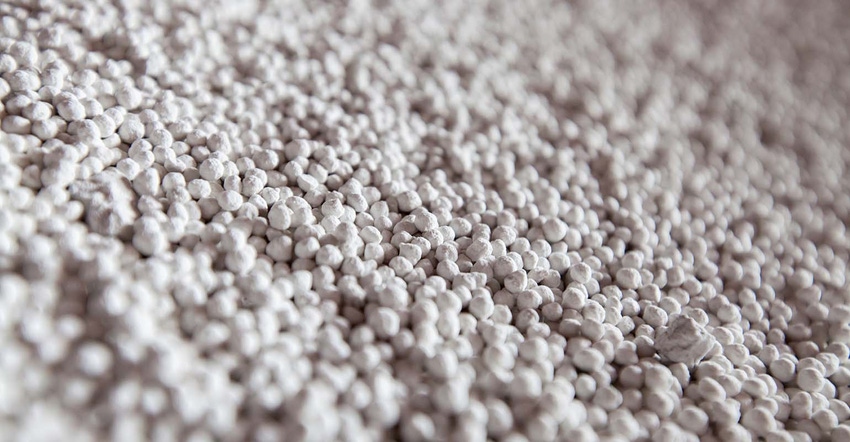
The U.S. Court of International Trade was asked by five agricultural groups to overturn an earlier decision by the International Trade Commission, which imposed tariffs on imported phosphate fertilizers from Morocco.
“Farmers are feeling the pain from these tariffs,” says Iowa farmer and National Corn Growers Association President Chris Edgington. “We’re facing severe cost hikes on our fertilizers, and we are worried about fertilizer shortages next year. We desperately need the U.S. Court of International Trade to remedy this situation.”
The U.S. Department of Commerce recommended in February 2021 that the ITC implement tariffs over 19% on imported fertilizers from Morocco after the Mosaic Company, which manufactures fertilizers used in the U.S. and abroad, filed a petition with the department seeking the levies. The ITC voted in March to impose the tariffs while adding similar levies on Russian imports.
As a result, critical sources of imported supply have been shut out of the U.S. market, and the costs for fertilizers have increased for farmers. In the meantime, Mosaic, whose control of the phosphate market has grown from 74% to over 80%, is gaining a near-monopoly over the phosphate fertilizer supply in the U.S. In fact, Mosaic’s share price has quadrupled since a March 2020 low, NCGA says.
NCGA, Agricultural Retailers Association, American Soybean Association, the National Cotton Council and the National Sorghum Producers signed a friend of the court amicus brief which challenged the decision held that the U.S. phosphate fertilizer producing industry was materially injured “by reason of” subject imports. The groups claimed the subject imports were the cause of a supply imbalance in 2019; the increase in subject import volume was not created by domestic producers’ decision to idle production facilities and prioritize sales to foreign markets; and the subject imports were unnecessary to supply farmers’ needs in 2019.
The ITC observed a supply imbalance that occurred during 2019 and blamed imports for it. The brief explains specifically, on Oct. 31, 2017, Mosaic announced that it would idle – and ultimately completely shutter – its Plant City facility, taking offline 1.5 million short tons of North American production. In February 2018, Nutrien announced that it would close its Redwater facility, taking offline another 600,000 ST of North American production, while promising to continue supplying Western Canada from its U.S.-based facilities.
A historic series of wet weather events during 2018-2019 resulted in reduced total plantings for three consecutive growing seasons. Fall 2018 demand projections for phosphate fertilizers during those planting seasons were, therefore, not met. Supplies imported in anticipation of meeting demand during those planting seasons were not exhausted on the expected timetable.
“Domestic producers were well aware of these market dynamics and aware that their decision to reduce domestic production dictated an increase in import supply,” the groups write. “In other words, to the extent that there was a weather-induced supply imbalance, it would have existed whether or not U.S. plant closures had led distributors to place additional import orders. There is no evidence in the record, much less substantial evidence, to support blaming imports for the supply imbalance.”
“Farmers pay the price when input companies monopolize a market,” adds Edgington. “To get our job done and keep prices reasonable, we need quick access to fertilizers from multiple companies, including those outside the U.S.”
Fertilizer supply typically takes several months to work its way through the supply chain, the brief notes. In addition, unexpected weather patterns, such as abnormally high precipitation, can negatively impact demand for fertilizers, causing a mismatch between projected demand and actual purchases.
“…farmers can only apply fertilizers during a finite window of the planting season,” the brief explains. "If supply is not available during that window, fertilizer application must be delayed until some future window of opportunity. This places a premium on reliability of supply, leading suppliers to diversify sourcing.”
The brief adds that agriculture production is a risky business. “Farmers are in a constant battle with nature, the elements, pests, and now, apparently, corporate expansion strategy,” they write.
They add that the trade remedy laws were never meant to punish downstream users when domestic producers elect to stop or reduce supplying the domestic market. “The mechanism by which the trade remedy laws avoid that absurd outcome is the injury test, which is only satisfied when material injury occurs ‘by reason of’ subject imports. That did not happen in this case,” they argue.
About the Author(s)
You May Also Like






